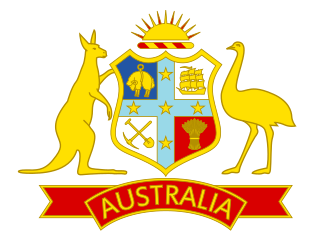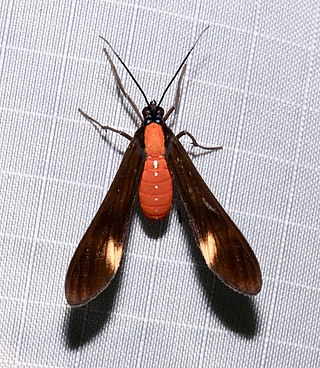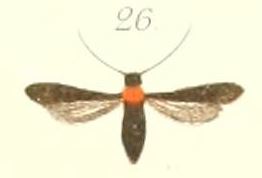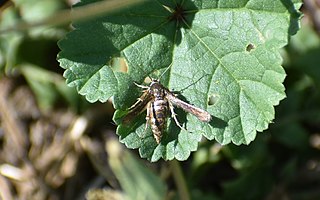
Western Australia is a state of Australia occupying the western third of the land area of Australia, excluding external territories. It is bounded by the Indian Ocean to the north and west, the Southern Ocean to the south, the Northern Territory to the north-east, and South Australia to the south-east. Western Australia is Australia's largest state, with a total land area of 2,527,013 square kilometres (975,685 sq mi). It is the second-largest country subdivision in the world, surpassed only by Russia's Sakha Republic. As of 2021, the state has 2.76 million inhabitants—11 percent of the national total. The vast majority live in the south-west corner; 79 percent of the population lives in the Perth area, leaving the remainder of the state sparsely populated.

Freesia is a genus of herbaceous perennial flowering plants in the family Iridaceae, first described as a genus in 1866 by Christian Friedrich Ecklon (1886) and named after the German botanist and medical practitioner, Friedrich Freese (1795-1876). It is native to the eastern side of southern Africa, from Kenya south to South Africa, most species being found in Cape Provinces. Species of the former genus Anomatheca are now included in Freesia. The plants commonly known as "freesias", with fragrant funnel-shaped flowers, are cultivated hybrids of a number of Freesia species. Some other species are also grown as ornamental plants.

The Australia men's national cricket team represents Australia in men's international cricket. As the joint oldest team in Test cricket history, playing in the first ever Test match in 1877, the team also plays One-Day International (ODI) and Twenty20 International (T20I) cricket, participating in both the first ODI, against England in the 1970–71 season and the first T20I, against New Zealand in the 2004–05 season, winning both games. The team draws its players from teams playing in the Australian domestic competitions – the Sheffield Shield, the Australian domestic limited-overs cricket tournament and the Big Bash League. Australia are the current ICC World Test Championship and ICC Cricket World Cup champions. They are regarded as one of the most successful cricket teams in the history of Cricket

The koklass pheasant is a species of gamebird, being closely related to progenitive grouse that lived during the Miocene. They are distantly related to pheasants and are most closely related to grouse and turkeys. Koklass are the only species in the monotypic genus Pucrasia. Both the words koklass and pucrasia have been onomatopœically derived from the bird's territorial call.

The Sesiidae or clearwing moths are a diurnal moth family in the order Lepidoptera known for their Batesian mimicry in both appearance and behaviour of various Hymenoptera.

Australia, officially the Commonwealth of Australia, is a sovereign country comprising the mainland of the Australian continent, the island of Tasmania, and numerous smaller islands. Australia is the largest country by area in Oceania and the world's sixth-largest country. Australia is the oldest, flattest, and driest inhabited continent, with the least fertile soils. It is a megadiverse country, and its size gives it a wide variety of landscapes and climates, with deserts in the centre, tropical rainforests in the north-east, tropical savannas in the north, and mountain ranges in the south-east.

Cisthene is a genus of lichen moths in the family Erebidae. The genus was erected by Francis Walker in 1854.

Rhynchopyga is a genus of moths in the subfamily Arctiinae.
Mylantria is a monotypic moth genus in the subfamily Lymantriinae erected by Per Olof Christopher Aurivillius in 1904. Its only species, Mylantria xanthospila, was first described by Plötz in 1880. It is found in western Africa.

Tinthia is a genus of moths in the family Sesiidae.
Xanthospila is a genus of round-necked longhorn beetles of the subfamily Cerambycinae.
Negotinthia myrmosaeformis is a moth of the family Sesiidae. It is found in the countries around the Black Sea, including Ukraine, southern Russia, Romania, Bulgaria and the southern part of the Balkan Peninsula. It has also been recorded from Asia Minor, northern Iraq, Armenia and Azerbaijan.

Microsphecia tineiformis is a moth of the family Sesiidae. It is found in southern Europe. It has also been recorded from Morocco, Algeria, Tunisia, Asia Minor, Armenia and from Azerbaijan to northern Iran and northern Iraq.

Tinthia ruficollaris is a moth of the family Sesiidae. It is found in Papua New Guinea.

Gymnetis is a genus of beetles of the family Scarabaeidae and subfamily Cetoniinae.
Cisthene xanthospila is a moth of the family Erebidae. It was described by George Hampson in 1900. It is found in Brazil.
Rhynchopyga xanthospila is a moth in the subfamily Arctiinae. It is found in Bolivia.
This page is based on this
Wikipedia article Text is available under the
CC BY-SA 4.0 license; additional terms may apply.
Images, videos and audio are available under their respective licenses.









